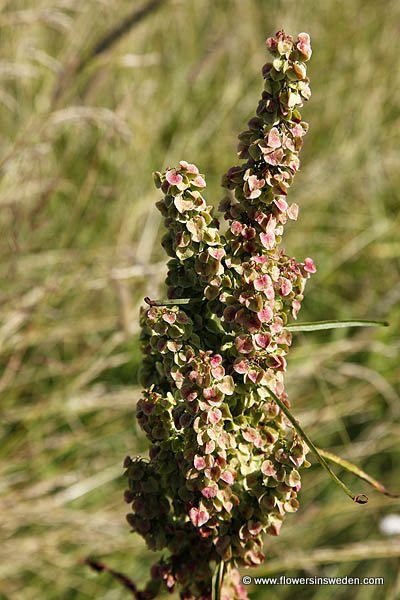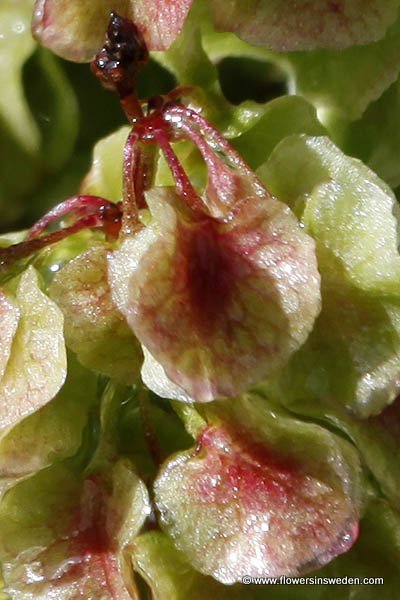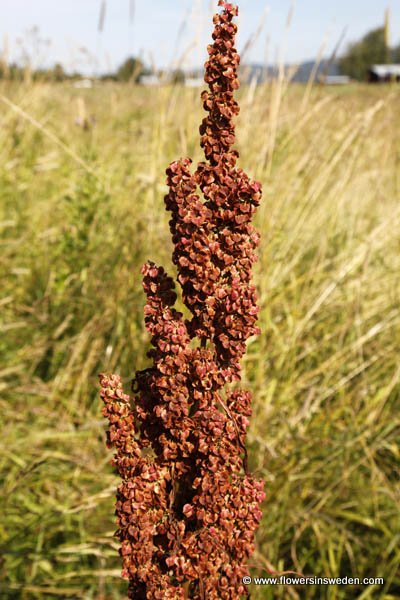
| Scientific name: | Rumex longifolius DC. | |
| Synonym name: | Rumex domesticus Hartm. | |
| Swedish name: | Gårdsskräppa | |
| German name: | Gemüse-Ampfer | |
| Nederlandse naam: | Noordse zuring | |
| English name: | Northern Dock, Dooryard dock | |
| Family: | Polygonaceae, Buckwheat family, Slideväxter |

|
| Life form: | Perennial herb | |
| Stems: | Height 60-120 cm, erect, grooved, unbranched up to inflorescence; vertical rootstock | |
| Leaves: | Alternate,leafblades 25-50 x7-15 cm, lanceolate, tapering towards the base; wavy margins; no appendages at the base | |
| Inflorescence: | Terminal, clusters in several racemes | |
| Flowers: | In whorls, 10-20; segments of outer whorl small and turned backwards; Inner whorl forms the fruit valves which are roundish to kidney-shaped, with entire or crenulate margins | |
| Flowering Period: | July, August, September | |
| Fruits: | Achene, brown, sharply three-edged, glossy; valves with entire margins that lack tubercles | |
| Habitat: | Pastures, roadsides, ruderal | |
| Distribution: | Throughout the country |
 Derivation of the botanical name: Rumex , the ancient Latin name for the docks or sorrels. longifolius, longus, long, extended; folius, leaf; long leaved. domesticus, cultivated.
Rumex pseudonatronatus can be distinguished from Rumex longifolius by its narrower leaves, smaller and more distinctly triangular inner tepals, and purplish or reddish brown stems at maturity. Both have valves with entire margins that lack tubercles, leaves with undulate margins.   |